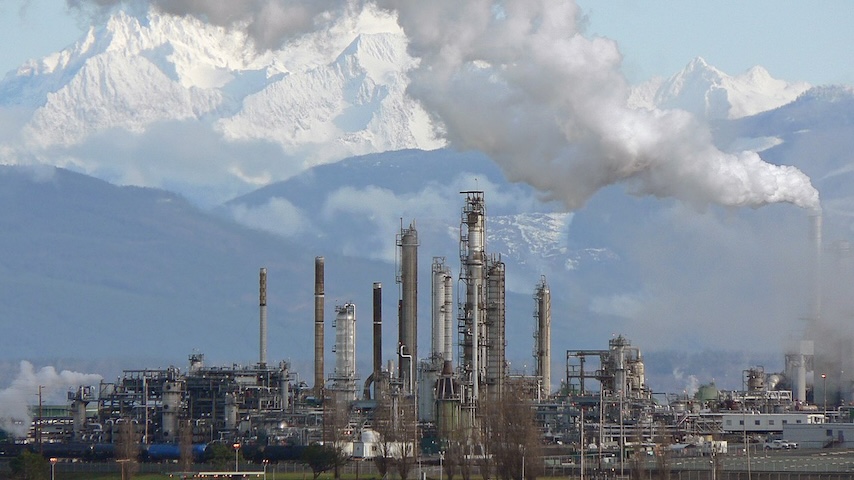‘No Sign’ of Fossil Fuel Peak: Emissions Will Rise Yet Again in 2025
Photo by Walter Siegmund/Wikimedia Commons
The thing about “mid-century” climate targets is that 2050 just isn’t that far away anymore. It is closer to us now than the release of The Big Lebowski, or the creation of Napster. The 2030 goals seem even more absurd, when you do the math. And yet, the latest: global carbon emissions are projected to rise once again in 2025.
“The impacts of climate change are becoming increasingly dramatic, yet we still see no sign that burning of fossil fuels has peaked,” said Pierre Friedlingstein, of Exeter University, according to a press release. He led a study from the Global Carbon Project, which found that emissions from fossil fuels will reach 37.4 billion tons next year, a jump of 0.8 percent over 2024. “Time is running out to meet the Paris Agreement goals.”
A big part of this is inertia, in that the world is a big place and it isn’t easy to turn its energy systems around on short time scales. But it’s still bad news, and demonstrates that even the substantial progress being made globally is not moving at close to the speed required.
There are, of course, drastic national and regional differences here. China, the world’s biggest emitter by far, will likely see a small increase next year of around 0.2 percent, though the authors note that this is within a range of uncertainty that could mean they actually fall. That would be huge news, if it happens; China accounts for almost an entire third of the world’s emissions, so seeing that country actually peak and begin to decline will be a true watershed moment for climate progress.
Other big emitters are a mixed bag. The U.S. will see a drop of 0.6 percent, though obviously there’s a massive Donald Trump-shaped question mark now oozing blob-like toward that projection. India, the world’s third-largest emitter, is still growing: its emissions will grow by 4.6 percent, even as its renewable energy industry really is starting to take off. The E.U.’s collective emissions are on a relatively good path, and will drop by 3.8 percent in 2025.
Amazingly, the entire rest of the world outside those countries accounts for 38 percent of the total; their emissions will rise by 1.1 percent next year.
“There are many signs of positive progress at the country level, and a feeling that a peak in global fossil CO2 emissions is imminent, but the global peak remains elusive,” said Glen Peters, of the CICERO Center for International Climate Research in Oslo, which also participated in the study along with more than 80 other institutions around the world. “Climate action is a collective problem, and while gradual emission reductions are occurring in some countries, increases continue in others.”
The news comes, of course, as countries are now gathered in Baku, Azerbaijan — a petrostate host activist Greta Thunberg called “beyond absurd” — for COP29, trying to hash out not only a new climate finance agreement but a level of increased ambition that might put a dent in the Global Carbon Project’s numbers. It is tough to be optimistic in that regard, but there is at least some movement: U.K. Prime Minister Keir Starmer is in Baku, and he announced the most ambitious emissions target for a rich country yet seen.
The target is to reduce emissions by 81 percent below 1990 levels by 2035 (closer to today than, say, the start of Obama’s second term) — not bad, though the previous target was 78 percent, so we’re not talking leaps and bounds, here. Still, Starmer framed the issue as one of economic opportunity, rather than some onerous tax: “The race is on for the clean energy jobs of the future, the economy of the future,” he said.
Again, though, the problem here is one of collective action. “Progress in all countries needs to accelerate fast enough to put global emissions on a downward trajectory towards net zero,” said Peters, of the CICERO Center. Fast enough to get there in less time than has elapsed since release of The Matrix.